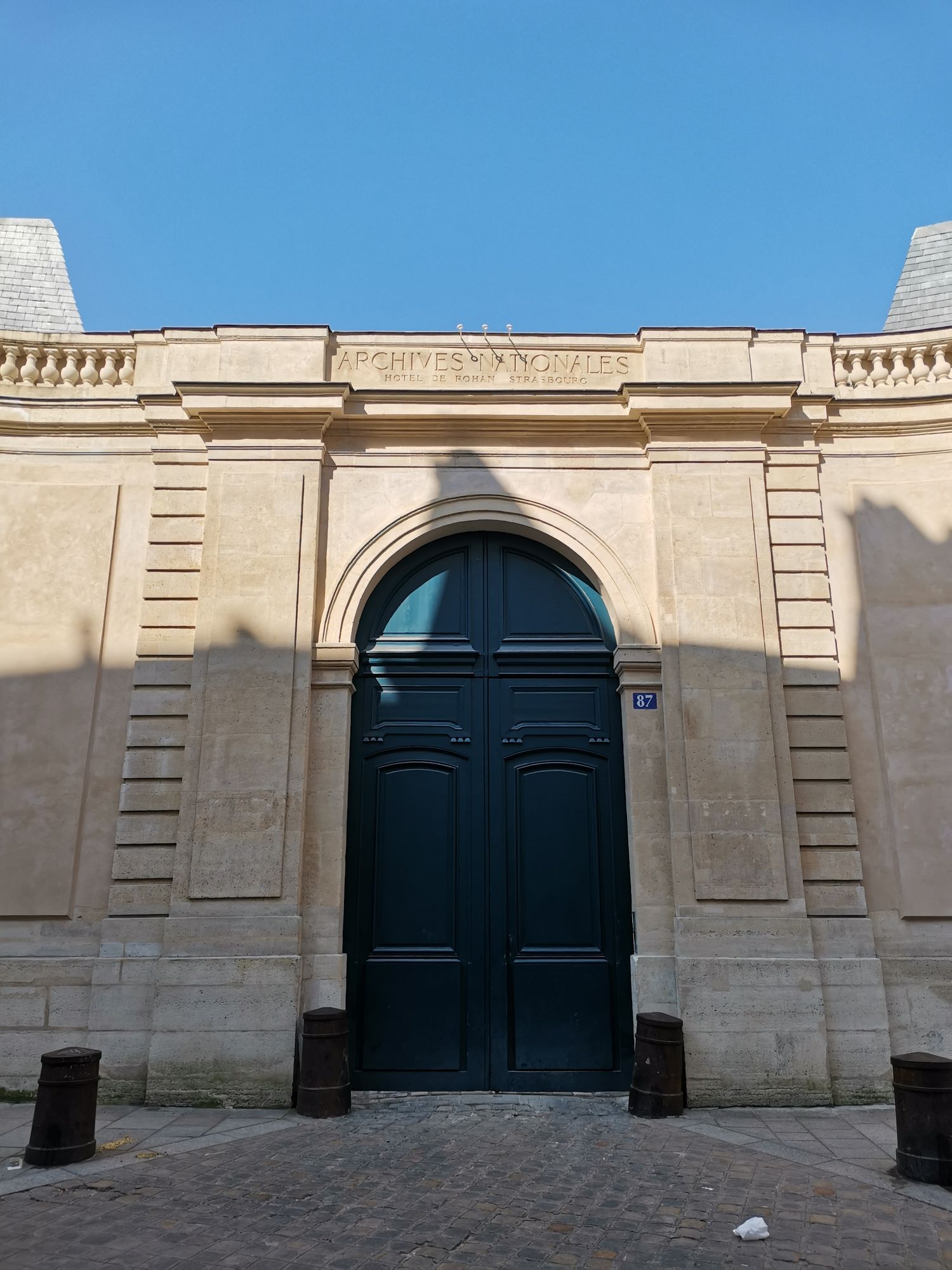The Hôtel de Rohan
 A brother of the Hôtel de Soubise, it was built between 1705 and 1708 by Delamair for the 1st of Rouen's four cardinals to have lived there. Its exterior decoration is more modest than that of its neighbor, and its main façade opens onto their shared garden. On the eve of the French Revolution, the last of the Rouen cardinals, duped by two adventurers in the affair of the Queen's necklace, was relegated to his abbey at La Chaise-Dieu. The courtyard of the stables is adorned with a masterpiece by Robert Le Lorrain: Apollo's Horses.
A brother of the Hôtel de Soubise, it was built between 1705 and 1708 by Delamair for the 1st of Rouen's four cardinals to have lived there. Its exterior decoration is more modest than that of its neighbor, and its main façade opens onto their shared garden. On the eve of the French Revolution, the last of the Rouen cardinals, duped by two adventurers in the affair of the Queen's necklace, was relegated to his abbey at La Chaise-Dieu. The courtyard of the stables is adorned with a masterpiece by Robert Le Lorrain: Apollo's Horses.The interior decoration has suffered greatly, but retains the Salon des Singes, painted by Huet between 1749 and 1752. Despite the profane nature of these “chinoiseries”, the room served as an oratory for the bishops of Strasbourg. Occupied by the Imprimerie nationale from 1801 to 1925, the hotel was assigned to the Archives nationales in 1928.
L'Hôtel de Rohan: Witness to a Rich History
The Hôtel de Rohan, a majestic monument built by architect Pierre-Alexis Delamair in 1705 for the de Rohan family, is now part of the Archives nationales. Located at the corner of rue Vieille du Temple and rue des Quatre Fils, this remarkable building has been listed as a historic monument since November 27, 1924.
History of the Hôtel de Rohan
The history of the Hôtel de Rohan dates back to the early 18th century, when Armand-Gaston-Maximilien de Rohan, Bishop of Strasbourg, decided to build this private mansion. Architect Pierre-Alexis Delamair built this magnificent residence on land adjacent to l'Hôtel de Soubise, which was already occupied by the de Rohan family.
After Armand-Gaston's death in 1749, three cardinals from the de Rohan family succeeded each other at the Hôtel de Rohan. These cardinals played a significant role in the religious and political history of their era.
Periods under the French Revolution
During the French Revolution, the Hôtel de Rohan fell on hard times. The building was seized and its furnishings dispersed. The library, once one of the richest, was partially transferred to the Bibliothèque de l'Arsenal.
The Hôtel de Rohan was acquired by the State on the orders of Napoleon I in 1808. The Imprimerie Nationale subsequently took up residence in the premises in 1809, becoming the hotel's tenant.
However, the transformation of the Hôtel de Rohan for the needs of the Imprimerie Nationale led to alterations to its interior spaces, including the removal of much of the woodwork and the almost total demolition of the grand staircase. It wasn't until the 1920s that efforts were made to save this historic treasure from destruction.
Installation of the National Archives
The Hôtel de Rohan was finally allocated to the Archives nationales in 1927, thanks to the efforts of Charles-Victor Langlois, Director of the Archives de France. Renovation work was undertaken, including restoration of the grand staircase, under the direction of architect Robert Danis. The Hôtel de Rohan was inaugurated as the site of the Archives nationales on May 30, 1938.
Architecture of the Hôtel de Rohan
The architecture of the Hôtel de Rohan is quite remarkable. The facade overlooking the garden is classical and majestic. It comprises thirteen bays and three levels, with a central columned forebody and triangular pediment. The sculptural decoration was created by the same craftsmen who worked on the Hôtel de Soubise.
The Hôtel de Rohan also boasts superb outbuildings, including majestic stables with a main door adorned with a large high-relief depicting Apollo's servants quenching the thirst of the horses in the chariot of the Sun.
The Salons and Decorations
Inside, the salons on the second floor are sumptuously decorated. Cardinal de Soubise had these rooms decorated between 1749 and 1752 under the direction of architect Pierre-Henri de Saint-Martin. The large oval vestibule leads to a square salon, a dining room, a music room and other magnificently ornate spaces.
Among the remarkable spaces is the “Cabinet des singes,” adorned with wainscoting panels painted by ornamentalist Christophe Huet. These panels depict rural scenes of Chinese men and women playing Western games, giving this exceptional room its name.
The Renaissance today
Today, the Hôtel de Rohan has been renovated to house the precious decor of the Chancellerie d'Orléans, including ceilings painted by notable artists. This restoration has restored the splendor of the past, offering the public a unique opportunity to immerse themselves in the history and magnificence of this private mansion.
Back to summary of the Marais mansions